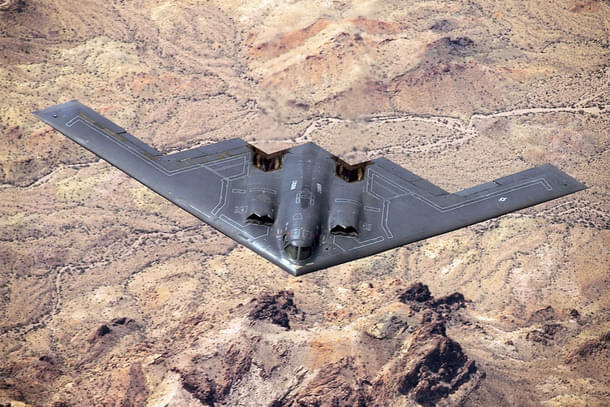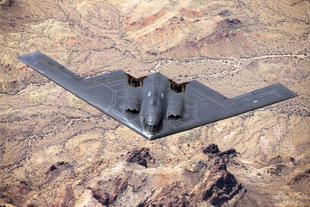News Brief
US Strike On Iran’s Nuclear Sites Used GBU-57 Bunker Busters From B-2s And 30 Tomahawk Missiles Fired From Submarines: Report
Swarajya Staff
Jun 22, 2025, 09:18 AM | Updated 09:17 AM IST
Save & read from anywhere!
Bookmark stories for easy access on any device or the Swarajya app.


In a high-stakes operation, the United States struck Iran’s nuclear facilities at Fordow, Natanz, and Isfahan on Sunday (21 June), reportedly using B-2 stealth bombers and Navy submarines armed with advanced bunker-buster bombs and precision missiles.
According to Fox News, US President Donald Trump told journalist Sean Hannity that the US used six "bunker buster" bombs to destroy the Iranian nuclear site at Fordow early Sunday (21 June).
In addition, Trump said that the US used 30 tomahawk missiles, launched from US submarines, to strike the Natanz and Isfahan facilities.
The strikes, aimed at crippling Iran’s nuclear capabilities, reportedly used GBU-57 Massive Ordnance Penetrators and Tomahawk cruise missiles.
The challenge of targeting Fordow, Natanz, and Isfahan lay in their varied fortifications.
Fordow’s mountainous cover demanded the bunker buster GBU-57’s full penetration capability, while the other two sites' surface infrastructure required precise targeting to avoid collateral damage.
Israel likely provided intelligence on target layouts, given its long-standing surveillance of Iran’s nuclear programme.
The Bombs: GBU-57 Massive Ordnance Penetrator
The US reportedly used the GBU-57 Massive Ordnance Penetrator (MOP), a 30,000-pound bomb designed to destroy hardened underground facilities.
Developed under Former President George W Bush, the MOP was "designed specifically" for targets like Fordow, where nuclear sites or command and control bunkers are hidden far underground.
However, the logistical challenge of deploying the GBU-57 is immense.
Each bomb, measuring 20 feet long, requires a B-2 Spirit stealth bomber, the only aircraft capable of carrying it.
The stealth bomber, capable of flying nearly 9,000 km without refuelling, reportedly flew from Whiteman Air Force Base in United States' Missouri to the West Asia, refueling mid-flight, and then dropped the bomb on the Iranian nuclear facility without triggering Iranian air defences.
Tomahawk Cruise Missiles
Complementing the B-2s, US Navy submarines launched Tomahawk Land Attack Missiles (TLAMs) to strike secondary targets and suppress air defenses.
Each TLAM, carrying a 1,000-pound warhead, can strike within meters of its target from over 2,400 km away.
The missiles were reportedly launched from submerged Virginia-class submarines in the Persian Gulf or Arabian Sea.





